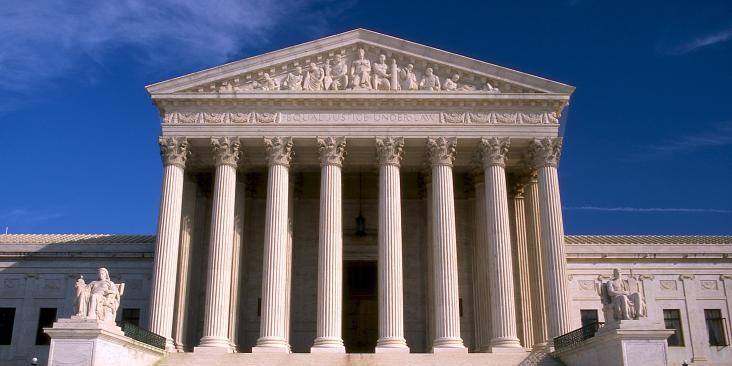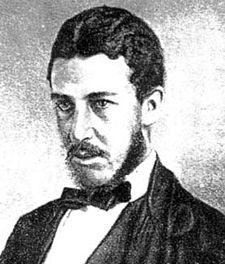How can we ensure that a carbon tax delivers on its pollution reduction potential? An innovative, new idea could provide greater certainty over the environmental outcome.
As momentum intensifies around the world for action to fight climate change, the United States is emerging as a leader in the new low-carbon economy. But if we are going to reduce climate pollution at the pace and scale required — cutting emissions 26-28% below 2005 levels by 2025 and at least 83% by 2050, on a path to zero net emissions —we need to roll up our sleeves on a new generation of ambitious climate policies that harness the power of the economy and American innovation. An emerging idea could be a game-changer for the prospects of a carbon tax to help tackle climate pollution.
Economics 101 teaches us that market-based policies, including cap-and-trade programs as well as carbon taxes, are the most cost-effective and economically efficient means of achieving results. Both put a price on carbon emissions to reduce dangerous pollution. Cap-and-trade programs place a “cap” on the total quantity of allowable emissions, directly limiting pollution and ensuring a specific environmental result, while allowing prices to fluctuate as pollution permits are traded. The “guarantee” that the cap provides is a primary reason this tool has been favored by EDF and other stakeholders focused on environmental performance. That U.S. targets are based on quantities of pollution reductions also speaks to the need for policy solutions tied to these pollution limits.
In comparison, a carbon tax sets the price per unit of pollution, allowing emissions to respond to the changes in behavior this price encourages. The problem, from an environmental standpoint, is that a carbon tax lacks an explicit connection to a desired pollution reduction target — and therefore provides no assurance that the required reductions will actually be achieved. We know that a carbon tax will impact emissions, but even the most robust modeling cannot provide certainty over the magnitude of that impact. Furthermore, fundamental factors like energy or economic market dynamics can change over time, affecting the performance of a tax. Because greenhouse gas pollution accumulates in the atmosphere over time, even being slightly off the desired path over several decades can produce significant consequences for cumulative emissions, and thus climate damages.
A new approach: Environmental Integrity Mechanisms (EIMs)
Two recently-released papers by the Nicholas Institute at Duke University and Resources for the Future (RFF) directly address this key concern with a carbon tax —and suggest an innovative path forward. They illustrate how a suite of provisions – we’ll call them “Environmental Integrity Mechanisms” or “EIMs,” though each paper uses different terminology – could provide greater levels of certainty regarding the emissions outcome, by allowing for adjustment of the carbon tax regime over time to course-correct and keep us on track for meeting our targets.
EIMs – if carefully designed – can play an important role in connecting a carbon tax to its performance in reducing pollution. They are a type of built-in insurance mechanism: they may never be triggered if the initial price path achieves its projected impact, but provide a back-up plan in case it does not.
These mechanisms are analogous to well-studied “cost containment” provisions in cap-and-trade that are designed to provide greater certainty over prices. Cost containment provisions are included in several successful cap-and-trade programs around the world. For example, California’s cap-and-trade program includes a price collar that sets a floor as well as a ceiling that triggers the release of a reserve of allowances.
EIMs are a parallel effort to introduce greater emissions certainty into a carbon tax system. With the recent publication of these two papers, EIMS are beginning to receive well-deserved greater attention. These provisions help bridge the gap between caps and taxes, merging the strengths of each to create powerful hybrid programs.
How EIMs might work
Let’s take a closer look at how these “EIMs” could work.
• First, the initial tax level and/or growth rate could be adjusted depending on performance against an emissions trajectory or carbon budget benchmark. This could occur either automatically via a simple formula built into the legislation, by Congressional intervention at a later date based on expert recommendations, or by delegation of authority to a federal or independent agency or group of agencies.
There are clear advantages to including an automatic adjustment in the legislation. This avoids having to go back to a sluggish Congress to act; and there is no guarantee that Congress would make appropriate adjustments. Moreover, Congress is likely to be loath to relinquish its tax-setting authority to an executive agency — and such delegation could even face legal challenges. Delegating tax-setting authority to an executive agency could also introduce additional political uncertainty in rate setting.
In designing such an automatic adjustment, policy makers will need to consider the type, frequency and size of these adjustments, as well as how they are triggered. The RFF paper in particular discusses some of the resulting trade-offs. For example, an automatic adjustment will reduce the price certainty that many view as the core benefit of a tax. On the other hand, by explicitly and transparently specifying the adjustments that would occur under certain conditions, a high degree of price predictability can still be maintained – with the added benefit of increased emissions certainty.
• Second, the Nicholas Institute brief discusses regulatory tools that could be employed if emission goals were not met –including existing opportunities under the Clean Air Act, or even new authority. The authors point out that relative to automatic adjustment mechanisms, regulatory options are more difficult to “fine-tune.” Nevertheless, they could provide a powerful safeguard if alternatives fail.
• Finally, as the Nicholas Institute brief discusses, a portion of tax revenue could be used to fund additional reductions if performance goals were not being met. This approach could tap into cost-effective reductions in sectors where the carbon tax might be more challenging to implement (e.g. forestry or agriculture). The revenue could also be used to secure greater reductions from sectors covered by the tax — for example, by funding investments in energy efficiency. In a neat twist, the additional revenue needed to fund these emissions reductions would be available when emissions were higher than expected — that is, precisely when more mitigation was needed.
EDF’s take
Our goal is to reduce the amount of carbon pollution we put into the atmosphere in as cost-effective and efficient a manner as possible. This means putting a limit and a price on carbon pollution.
Even at this preliminary stage in the exploration of EIM design, one takeaway is clear: all carbon tax proposals should include an EIM with an automatic adjustment designed to meet the desired emissions path and associated carbon budget.
More work is needed to develop and evaluate the range and design of EIMs. And while a cap is still the most sure-fire means of guaranteeing an emissions outcome, this growing consideration by economists and policy experts opens a new path for the potential viability of carbon taxes as a pollution reduction tool in the United States.
The bottom line is this: The fundamental test of any climate policy is environmental integrity. For a carbon tax, that means an EIM.










 Owen goes back to 1865 and William Stanley Jevons who at 28 came up with what has later been called the “Jevons Paradox”:
Owen goes back to 1865 and William Stanley Jevons who at 28 came up with what has later been called the “Jevons Paradox”: By the mid-1800s, the latest and greatest in lighting technology was spermaceti, a fat from the head of sperm whales. It cost around $1,500 a barrel in today’s dollars and its price was only going to go up as whales became ever scarcer. Since then, we have seen gas lights come and go and by now electric lights cost less than a thousandth as much as the equivalent in lighting power back then.
By the mid-1800s, the latest and greatest in lighting technology was spermaceti, a fat from the head of sperm whales. It cost around $1,500 a barrel in today’s dollars and its price was only going to go up as whales became ever scarcer. Since then, we have seen gas lights come and go and by now electric lights cost less than a thousandth as much as the equivalent in lighting power back then.